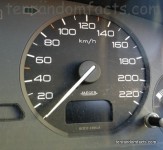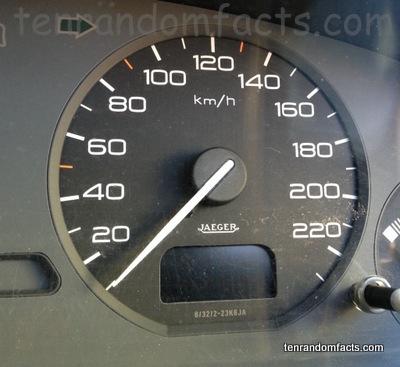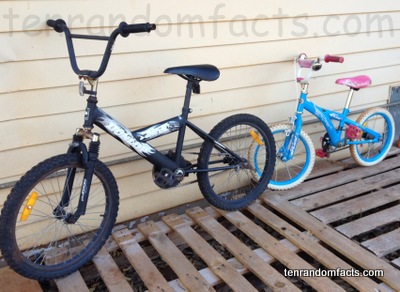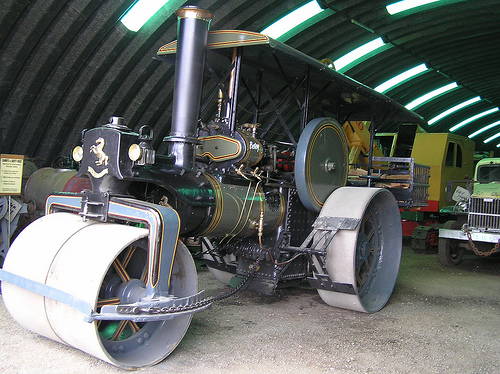
Do not drive over the speed limit while reading these speedometer facts.
- ‘Speedometers’ are also known as ‘speed meters’ and historically, ‘velocimeters’, that were typically made from metal alloy materials, but are now partly or mostly made from plastics.
- Speedometers are devices which measure the speed of a vehicle that travels on land, and most automobiles have been equipped with one since 1910.
- In 1888, Josip Belušić, an inventor from Europe’s Croatia, invented the first electric speedometer.
- On 7 October, 1902, eddy current speedometers were first patented by Otto Schulze, a German inventor, and these magnetically driven instruments have been the most popular speed measuring instruments in the last hundred years.
- The ‘visible’ part of the speedometer has a moving needle surrounded by spokes and numbers, and the location of the needle on the device indicates the speed.
- Eddy current speedometers have a cable that is connected to gears, usually in the transmission, that connects to a magnet which affects the needle on the instrument, that indicates the vehicle’s speed.
- The type of speedometers in new use today are commonly electronic, invented in the 1980s and 1990s, involving sensors and electromagnetic pulses that are read by a computer.
- Inaccuracy of speedometers most commonly occur due to faults, and differences in tyre diameters, with very minor errors occurring for reasons such as temperature.
- Some speedometers use the Global Positioning System, or GPS, to calculate speeds, with accuracy depending on the accuracy of the GPS.
- Leonardo da Vinci designed concepts of a speedometer type of instrument, and ancient civilisations had crude ways of measuring speed and distance.
Bibliography:
Kretschmann, Speedometer, 2014, How Products are Made, http://www.madehow.com/Volume-7/Speedometer.html
Speedometer, 2014, Wikipedia, http://en.wikipedia.org/wiki/Speedometer
Vintage Speedometers, 2013, Rare Car Relics, http://www.rarecarrelics.com/vintage_speedometers.php




















